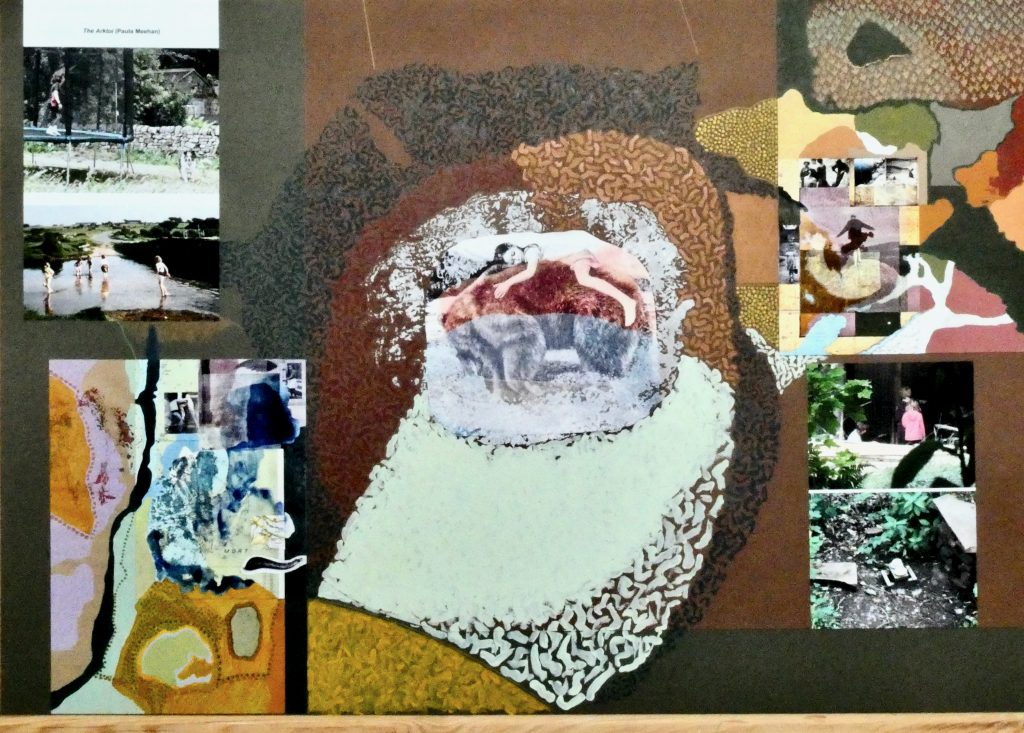Every so often I post an update here on my work in the studio , since it’s an important, indeed central, part of my overall way of engaging with the world. (It’s easy to forget that the word ‘studio’ shares a root with the word ‘study’ in an age when, all too often, it’s primarily seen as a place where first and foremost an art product is produced). The last time I posted such an update was on the 20th of June, 2020, so it seems time to do that again.
What I wrote then was that I’d contacted my friend Erin Kavanagh to ask her about the childhood of the mythic figure of Queen Maebh, as part of an attempt to follow up on an engagement with Irish poetry prompted by conversations with the Irish painter Eamon Colman. (As it happens I have subsequently discovered that, genealogically-speaking, I have connections with Ireland I had no idea of). To cut a long story short, the result was two pieces of work shown at the last RWA Annual Open Exhibition. These two pieces (see below) are titled Another Story – Maebh’s Youth and Another Story – Singing the Source. I now understand them to be both the end of a sequence – namely of a particular kind of constructed work – and as the initiation of the work I’ve been making during the lockdown necessitated by the Covid-19 pandemic.
Another Story – Maebh’s Youth
Another Story – Singing the Source
The images included here are not of the best quality, but at least give some sense of the two works. I have no particularly good images of the sixteen new works on card I have produced since the pandemic started, a series with the generic title Quiet Conversations. However, it seems important to indicate where the two Maebh images have led me. The image below is a studio shot of a work provisionally called Quiet Conversations: Paula Meehan / Karl Kerenyi (the Artktoi). Like the series as a whole, it takes it’s starting-point from a desire to celebrate the people and work that have sustained me during this difficult time – particularly difficult for my family because my daughter is both seriously disabled and immune compromised.
This image took as it’s starting-point one of Paula Meehan’s wonderful three essays published in her book Imaginary Bonnets With Real Bees In Them, in which she refers to the relationship between bears and the Goddess Artemis. A relationship I know something about through reading Karl Kerenyi’s essay on the subject, which is dedicated to his young daughter. It’s not yet clear to me in what form I will present this series when it’s finished. Since I’d quite like to associate a short text with each image, I had initially though of making an artist’s book. Whether or not that will still seem a practical possibility when the series is finished, I can’t tell as yet.

Quiet Conversations: Paula Meehan / Karl Kerenyi (the Artktoi)